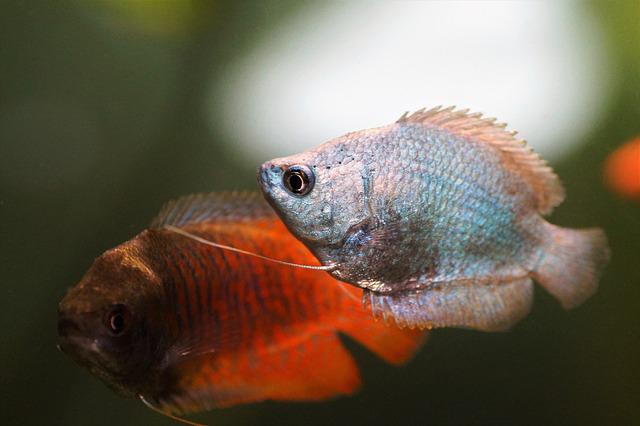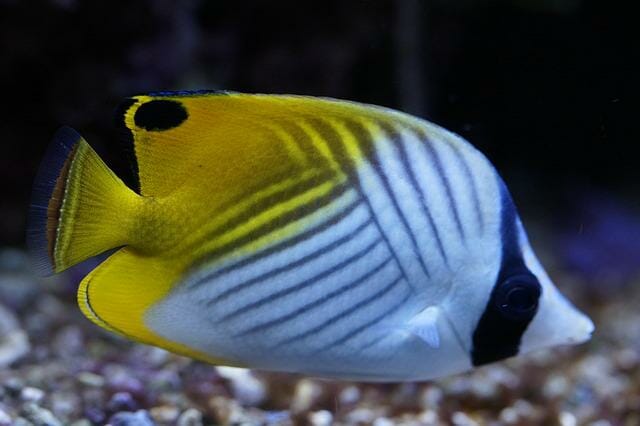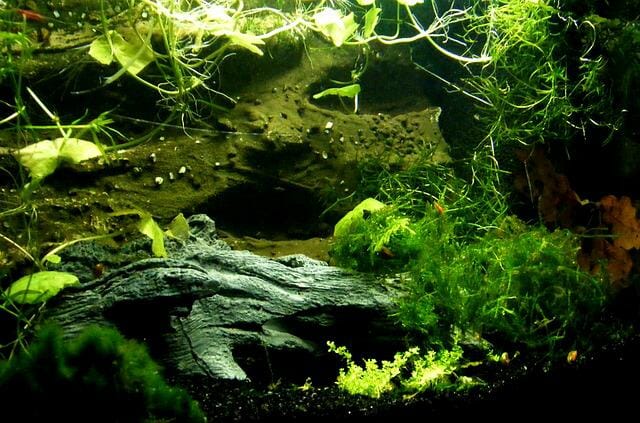Can Angelfish and Gouramis Live Together: Compatibility and Tips to Make it Work

Yes, angelfish and gouramis can live together peacefully. However, it is essential to keep an eye on the fish as they may get along well initially but eventually become territorial. If one fish starts behaving aggressively or attacking the other, it’s best to separate them.
All in all, angelfish and gouramis make decent companions if they are kept in an aquarium with plenty of space.
Table of Contents
Fish Temperament
Angelfish are peaceful and content fish that do best in calm, comfortable surroundings. Conversely, gouramis can be lively and playful swimmers that need plenty of space to swim and play.
If you’re considering keeping these fish together, choosing a tank size that accommodates both types of fish is essential. In addition, angels and gouramis need different types of food, so be sure to provide them with the appropriate diet.
Angelfish Temperament
Angelfish are generally peaceful fish, but they can be territorial if their space is invaded. They do well in calm, comfortable tanks, ample swimming areas, and a varied environment. However, they are not very active swimmers and do not require a lot of room to live. Instead, feed them small flakes or pellets that they can easily digest. They require minimal care and typically live up to 10 years.
Gourami Temperament
Gouramis are lively, playful fish that need plenty of space to swim and play. They do well in tanks with a varied environment and a moderate level of lighting. They require minimal care but can be aggressive if their territory is invaded. Gouramis typically live about 4-6 years.
Habitats and Tank Requirements
Both angelfish and gouramis can be kept in various aquarium habitats, including community tanks with other peaceful fish, solo tanks, or planted tank setups. Both angels and gouramis need spacious tanks that are at least 20 gallons in size. They do well when there is plenty of swimming and room to hide.
Angelfish Habitat
An aquarium with a sand or rock base is ideal for housing an angelfish. The distinct shape of the angel’s dorsal fin makes it difficult for other fish to swim around and harass them, so this type of tank works well for individuals that want their environment to be as peaceful as possible.
Gourami Habitat
Gourami prefers a tank with plenty of swimming area, so a planted tank setup with some underwater caves will work well. They also prefer moderately warm water, 72 – 82°F, and pH levels between 6.0 and 7.5. Additionally, they should be offered a small amount of food daily and some carbon dioxide supplementation.
Diet
Both angelfish and gouramis are omnivores, meaning they will eat a variety of food items, including flakes, pellets, fruits, and vegetables. Additionally, they will enjoy small live foods, including shrimp and brine shrimp.
Angelfish Diet
An angelfish’s diet should include variously dried and live food items. A good staple diet for an angelfish includes flake foods, such as brine shrimp. Once a week, they can also enjoy fresh fruits and vegetables, including cucumbers, tomatoes, and peas. In addition, they should be offered small amounts of live fish, such as mosquito larvae.
Gourami Diet
Gouramis will eat flakes and live foods like worms or small fish. They typically consume about 2-3 times their body weight daily in food, so make sure to offer plenty of different feeders to keep them fueled. In addition, gouramis enjoy a shallow water environment and should be provided plenty of aquarium rocks for swimming.

Angelfish and Gouramis Together: How to Make It Work?
Angelfish and Gourami can live together in a tank if the conditions are right. However, it is difficult for other fish to swim around and harass them, so this type of tank works well for individuals that want their environment to be as peaceful as possible. Additionally, both angelfish and gouramis should be offered a small amount of food daily.
So, if you want to keep both in your tank, be sure to feed them on a consistent schedule. Additionally, they should be offered some carbon dioxide supplementation since they do not produce their gas and will tend to become slightly stressed without it.
Tips on Keeping Gouramis With Angelfish
Since Angelfish and Gourami can get along in a tank, provided the right conditions are present, it is essential to follow a few guidelines when keeping them together. First, ensure they have access to different types of food so they don’t feel left out.
Additionally, gouramis enjoy swimming around on aquarium rocks, while Angels prefer to rest on surfaces like plants or live rocks. Finally, both fish should be kept well-supplied with water since both tend to drink excessively when stressed or excited.
Choose Young Fish
As with any fish combination, it is always best to choose young fish for a tank full of Angelfish and Gourami. This way, the aggression exhibited by some adults can be avoided, and both species will have time to get to know each other. Additionally, it’s essential to ensure each fish has a proper tank size and shape.
So, if you’re looking for an exciting addition to your home aquarium, angelfish and Gourami can live together, provided the right conditions are in place. However, it is best to choose young individuals, so they don’t get territorial or aggressive towards one another.
Aquarium Size
It is also essential to keep in mind the aquarium size when considering a tank combination of gouramis and angelfish. While they can live happily together in a 20-gallon aquarium, they may become territorial if kept in a larger setting. Additionally, angelfish can be territorial and will defend their territory against other fish.
Aquarium Plants
Adding some aquatic plants to an angelfish and gourami tank can also help to keep things calm. Additionally, floating vegetation can provide shelter and food for both fish. So, considering adding these two fish to your aquarium, it’s always a good idea to consider the plants.

Feeding Schedule
Finally, keep the feeding schedule for angelfish and gouramis when keeping them together. Both species typically eat a lot during spawning, so providing plenty of fresh water and vegetables as snacks are essential. Also, make sure to add some frozen foods to their diet.